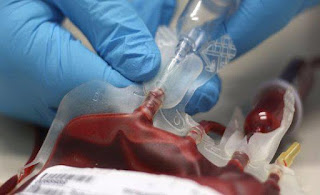Navigating Diabetic Ketoacidosis: Effective Treatment Strategies
Introduction:
Diabetic Ketoacidosis (DKA) is a serious complication of diabetes that requires immediate attention and effective management. This life-threatening condition arises when the body lacks insulin, causing blood sugar levels to rise and ketones to accumulate, leading to a dangerous metabolic imbalance. However, with timely and appropriate treatment strategies, individuals with DKA can regain control of their health and avoid severe consequences. In this blog, we will explore the essential treatment strategies that can help navigate Diabetic Ketoacidosis successfully.
- Prompt Medical Intervention:
The first and most crucial step in managing DKA is seeking prompt medical attention. If you or someone you know with diabetes experiences symptoms such as excessive thirst, frequent urination, nausea, vomiting, or abdominal pain, it is essential to contact a healthcare professional immediately. Timely intervention can prevent the condition from worsening and reduce the risk of complications.
- Insulin Therapy:
The cornerstone of DKA treatment is insulin administration. Insulin helps lower blood sugar levels and counteracts the ketone buildup in the bloodstream. Typically, patients will receive insulin through an intravenous (IV) line in a hospital setting. Regular monitoring of blood glucose and ketone levels ensures the dosage is adjusted as needed to achieve stable blood sugar levels.
- Fluid Replacement:
DKA can lead to severe dehydration due to excessive urination and fluid loss. Therefore, fluid replacement is a critical component of the treatment. Intravenous fluids containing electrolytes are administered to restore hydration levels and maintain a proper balance of salts in the body. This process helps to flush out ketones and aids in stabilizing blood sugar levels.
- Electrolyte Management:
The imbalanced metabolism in DKA can disrupt the body's electrolyte levels, such as potassium, sodium, and bicarbonate. Monitoring and correcting these imbalances are crucial to preventing complications like cardiac arrhythmias or muscle weakness. Healthcare professionals carefully monitor electrolyte levels and administer supplements as needed.
- Identifying and Treating Underlying Causes:
Diabetic Ketoacidosis can be triggered by various factors, such as infections, missed insulin doses, or other medical conditions. Identifying and addressing the underlying cause is essential for preventing future episodes of DKA. This may involve treating infections with antibiotics, addressing medication adherence issues, or adjusting diabetes management plans accordingly.
Conclusion:
Diabetic Ketoacidosis is a severe complication of diabetes, but with proper medical intervention and effective treatment strategies, it can be managed successfully. Timely administration of insulin, fluid replacement, electrolyte management, and addressing underlying causes are crucial steps in navigating DKA and avoiding potential life-threatening complications. If you or someone you know with diabetes experiences symptoms of DKA, seeking immediate medical attention is vital for a safe and successful recovery. Remember, staying vigilant and proactive in diabetes management can significantly reduce the risk of developing DKA and improve overall quality of life.




Comments
Post a Comment